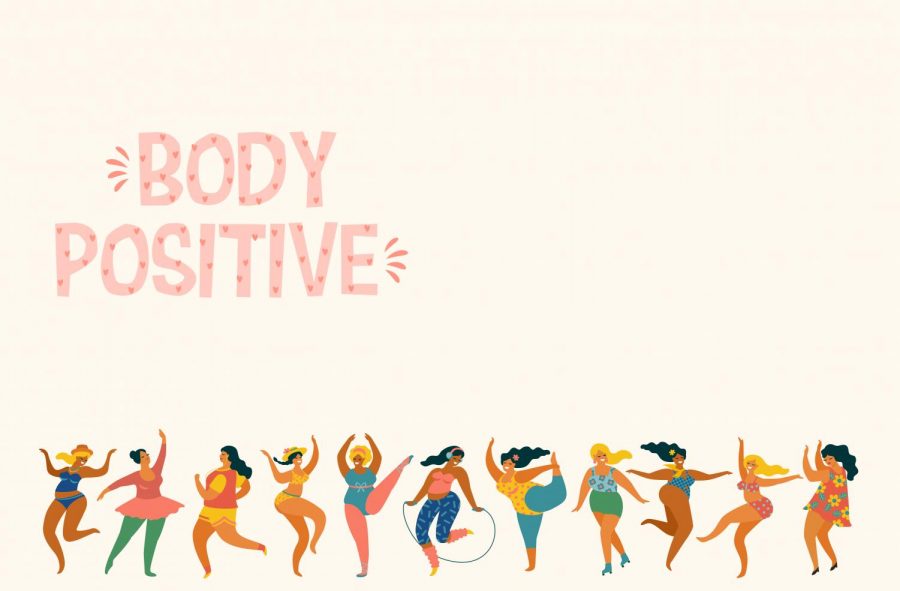Lily Prochaska’s Opinion Article
As someone who’s struggled with body image, I have experienced the double-edged nature of social media in relation to how we see ourselves. I always compare myself to the girls I see on social media, and that would destroy my self confidence. I didn’t see my body as a “beautiful” body because society’s standards of a “beautiful” body are that you have to be skinny and small. I’m sick of beauty standards that have been inflicted on both men and women at such a young age. There is no perfect with people, we come in a range of sizes so I wish that society would stop inflicting unrealistic ‘beautiful hourglass figures’ to be my ‘goal’. There’s no doubt that we all struggle at some point to feel at peace with our appearance. In severe cases, a lack of body confidence can lead to debilitating thought patterns and devastating health consequences. To use body confidence and body positivity interchangeably would be to ignore the rich history and societal context of the movement.
Body positivity is a movement that is built around the idea that all bodies have worth. With the media narrative focusing on a very narrow definition of health and beauty, body positivity serves to challenge the way we view bodies and promote acceptance of all bodies. Body confidence, however, is an individualistic way of seeing our bodies. There’s no doubt that we all struggle at some point to feel at peace with our appearance. In severe cases, a lack of body confidence can lead to debilitating thought patterns and devastating health consequences. To use body confidence and body positivity interchangeably would be to ignore the rich history and societal context of the movement.
For many decades, certain body types and sizes have been considered most acceptable by society. Traditionally, Western countries have given recognition, appreciation and privilege to those whose appearance fits within a certain idea. Most often, this ideal involves thinness, muscularity or body shape. Ideas of body positivity have been around for over a hundred years, but have only more recently formalized into a social movement. Body positivity dates back as far as 1850, where women protested that they should not be required to wear corsets to change their body shape. More formally, the body positivity movement was created by Connie Sobczak and Elizabeth Scott in 1996. The movement was started based on Connie’s own experience with an eating disorder. Elizabeth, a psychologist specializing in eating disorders, also co-founded the organization. The body positivity movement has impacted the fashion and advertising industries, use of social media and general levels of inclusion and acceptance of different body types within the wider community.
We can and must do better. Creators and companies need to be mindful of the distinction between confidence and positivity. Using #bodypositivity needs to be accompanied by meaningful action. The diversification of our feeds begins with individual commitment to support content featuring marginalized creators and bodies. It may seem like a small shift, but representation goes a long way in combating stigma and transforming culture. Embracing the body positivity movement in its most authentic form is exactly what we need.
Your donation will support the student journalists of West High School. Your contribution will allow us to purchase Scholarship Yearbooks, newsroom equipment and cover our annual website hosting costs.

(she/her) Lily Prochaska is a senior and this is her second year on staff. She is the print sports editor this year. She plays volleyball and loves to...










